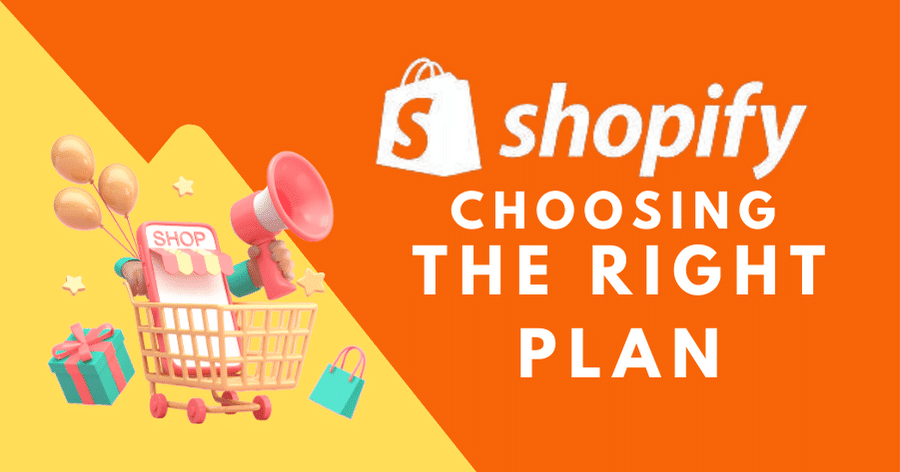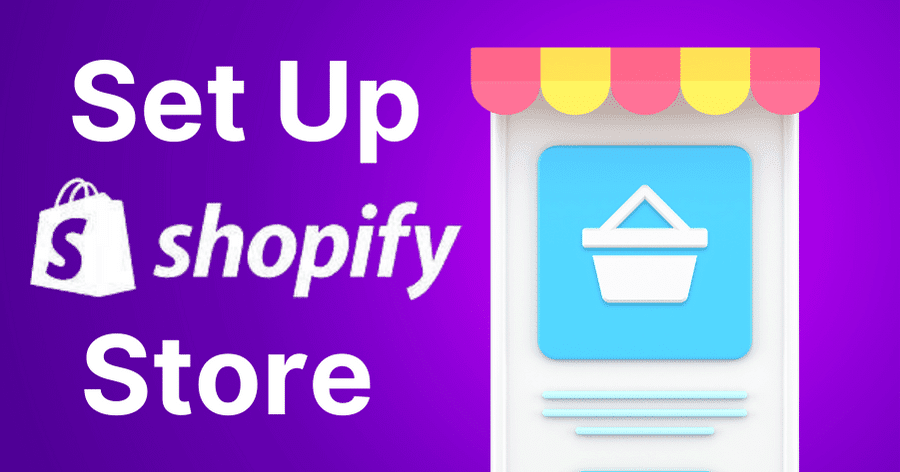Are you thinking of starting an internet shop and to set up Shopify store? Want to learn how to create a Shopify store that brings in more money? Learn all you need to know to launch a successful Shopify store that stands out from the competition with the help of this comprehensive guide. Shopify is a powerful e-commerce platform that makes it easy for anybody to open an online store. Shopify’s simple interface, customizable themes, and built-in services have made it the platform of choice for startups and small businesses all over the world. Nevertheless, if you’re not tech-savvy, creating a Shopify storefront might seem daunting. To help you get off to a solid beginning, we’ve compiled this guide.
This post will teach you all you need to know to establish a Shopify store from start. From making the right theme choice to improving your product pages, we’re here to assist you in any way we can. Let’s start moving right now!

Choosing the Right Shopify Plan:
It is important to choose the appropriate Shopify plan before beginning set up shopify store. Shopify has a variety of pricing tiers and feature sets to accommodate every kind of company. You may choose from one of three primary strategies:
- Shopify’s most basic plan is perfect for startups and modestly successful enterprises with minimal monthly revenue. There are no hidden fees, and it has everything a new business needs to get off the ground, including a fully working website and blog, an unlimited number of items, and technical help available at any time.
- Shopify’s Starter Plan is a great fit for companies with low to moderate monthly sales. Gift certificates, expert reports, and abandoned cart recovery are just some of the extra features included.
- Shopify’s highest tier, Advanced, is tailored to enterprises who get a lot of traffic and, therefore, require a lot of flexibility and customization. It has everything Shopify has, plus extras like the ability to create complex reports and use shipping costs determined by a third party.
Depending on your financial resources, sales volume, and unique requirements, you may choose the most suitable plan for your company. You may begin establishing your Shopify shop after you have selected the appropriate plan.
Set Up Shopify Store

1. Choose a Theme:
Selecting a theme is the first step in setting up your Shopify shop. To meet various company requirements, Shopify provides a large selection of both free and premium themes. To select the ideal theme for your shop, you may explore themes by category or by feature.
Take into account the following elements while selecting a theme:
- Theme compatibility with your brand identity and target market.
- The theme’s functionality: Is it equipped with all the features you want, such as a responsive design for mobile devices, editable sections, and social media integration?
- The cost: Does the theme fit your spending plan and provide excellent value?
After selecting a theme, you may modify it to fit your brand and aesthetic preferences.
2. Set Up Shopify Store Settings:
Your online shop’s configuration comes next. Adding your company’s name, address, and payment details is part of this process. Taxes and shipping costs will also need to be determined.
These are the measures you should take to prepare your online shop:
- To adjust the settings for your Shopify store, go over to the “Admin” tab.
- Choose “General” to enter your company’s details including name, address, and contact info.
- To configure your payment gateway and preferred ways of payment, go to the “Payments” page.
- To specify shipping costs and options, go to the Shipping tab.
- Choose your tax percentages by clicking the “Taxes” tab.
3. Add Your Products:
After creating your store’s design, you may begin adding it with products. These are the measures to take care while doing it.
- Go to the “Products” tab in the Shopify control panel.
- To add a new product, choose the “Add product” button.
- Please specify the product, provide a description, and provide photographs.
- Determine the selling price, product weight, and delivery information.
- Create groups of similar items to sell so that clients can find what they’re looking for faster.
4. Optimize Your Product Pages:
You can’t expect to boost sales and earnings without first optimising your product pages. Please take into account the following while trying to improve your product pages:
- Titles: Give your items informative, keyword-rich names to boost their visibility in search engine results.
- If you want to sell more of your items, you need to write descriptive copy that sells the reader on the value they will get.
- Images of your items should be of a high quality and taken by a professional photographer to best display your merchandise.
- Product reviews: Request that satisfied buyers post testimonials in order to increase credibility and social evidence.
5. Set Up Your Payment Gateway:
To begin receiving payments from consumers, you must first set up a payment gateway. Several different payment processors, such as PayPal, Stripe, and Apple Pay, are compatible with Shopify. Here are some guidelines for establishing a payment processing system:
- Go to the “Settings” tab in your Shopify admin panel.
- To choose a payment method, go to “Payments” now.
- Get your payment gateway set up by following the on-screen instructions.
6. Launch Your Store:
Your Shopify shop is ready for launch after you’ve finished setting it up and adding your items. Make careful to accomplish the following before taking off:
- Inspect your shop: Check that every page loads quickly, every link works, and the purchasing procedure is trouble-free.
- Dot your website with a : You should choose a domain name that both stands for your brand and is easily remembered.
- Develop a strategy for advertising: Develop a strategy to advertise your shop and get people to your online portal.
Frequently Asked Questions (FAQs):
Q. While using Shopify, can I use my own domain name?
A. By using Shopify, you may use your own domain name. Your Shopify shop may use a new domain name that you purchase via the platform, or you can link an existing domain name.
Q. If I wanted to open a shop on Shopify, how much would it cost?
A. The cost of opening a Shopify shop is variable, depending on the plan you choose and any extra features or applications you decide to implement. Pricing for Shopify ranges from $29 for the bare bones plan, $79 for the Shopify plan, and $299 for the Advanced Shopify plan.
Q. What if I want to make changes to my Shopify store?
A. You may change the look of your Shopify shop by picking a new theme, installing new applications, and adjusting the various parameters. You may further tailor your store’s appearance and functionality with the help of Shopify’s Liquid template language.
Conclusion
Successfully setting up a Shopify store takes meticulous preparation and execution. If you follow the advice in this article, you’ll be able to build a Shopify shop that attracts customers, generates more money, and stands out from the crowd. The correct strategy, a theme that fits your brand’s aesthetic, items, optimised product pages, a functioning payment gateway, and a successful shop launch are all essential steps. Your Shopify shop has the potential to become a successful online enterprise if you put in the time and effort to develop a solid strategy and marketing plan.


